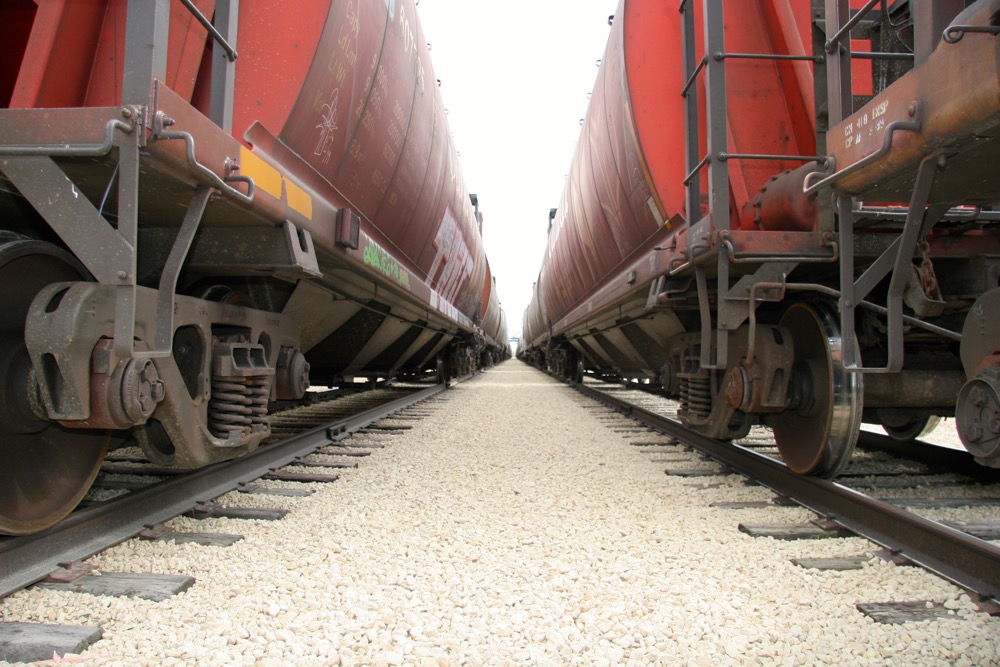Editor’s note: I am still the editor of Grainews, but I’ve given this page over to our field editor Lisa Guenther for this issue. As you saw on our cover, Lisa’s been looking into the transportation fiasco. She has some well-researched, timely opinions that I wanted to highlight at the very front. — Leeann Minogue
If anyone should be outraged by the railways’ poor service, it’s Gerry Ritz.
The federal agriculture minister has diligently worked on market access for Canadian agricultural products. And, in November 2011 Ritz told a legislative committee that the single desk’s end would mean better rail service “because we won’t be dragging our sales out at the rate of one-12th every month, as the wheat board does now.”
Read Also

Prevent nitrate poisoning in overwintering beef cows
High-nitrate feeds can be deadly for overwintering beef cows. They can be used, but only if they’re processed and diluted in a lower nitrate ration.
“There will be a lot more moving off the combine and a lot more going to market positions earlier, getting us away from starting our trucks and our augers at -40 C in January,” Ritz said.
Well, that obviously hasn’t happened. Last year’s bin buster has exposed the holes in our grain transportation system. And it’s costing the ag industry big time in demurrage charges, lost customers and lost income for farmers.
Ritz ought to be worried about the railways unravelling his work securing foreign markets. And you’d think he’d be furious on behalf of farmers, grain elevators and the rest of the industry.
There’s little doubt that CN and CP should shoulder most of the responsibility. After all, western Canadian shipments are 51,000 cars behind, Greg Cherewyk of Pulse Canada told the House agriculture committee Feb. 10.
And the railways don’t seem inclined to bump up car shipments. They’re only providing between 3,000 and 4,000 cars per week right now, Wade Sobkowich, executive director of the Western Grain Elevators Association, told the committee.
For some historical perspective, in late 1983-84, in one week Thunder Bay unloaded over 9,500 grain cars and Vancouver handled over 3,000.
Why, exactly, are the railways stiffing the agriculture industry on hoppers these days? Mark Hallman, CN’s spokesperson, told me the polar vortex was slowing service, and Ed Greenberg of CP cited extreme weather as a challenge, too (see “Delays caused by harsh winter,” Grainews, March 4, 2014, page 1; click HERE for a PDF of the March 4 issue).
But this excuse wears thin. Winter rolls in every year. It’s often miserable on the Prairies. How many more winters do the railways need to experience before they adapt?
Ritz has made some positive announcements in the last few weeks. He’s called for more frequent reporting of grain movement. And the federal government is kicking in $1.5 million for a five-year study, led by Pulse Canada, to examine the grain transportation and logistics system.
But Ritz was singing a different tune last fall. In November, he told reporters in Winnipeg that although he wasn’t a railway apologist, “I do agree with (CN). Putting more cars on the freeway at rush hour doesn’t make it more efficient.”
And when asked about rail service issues last December in Edmonton, Ritz told reporters “I think those who are complaining should look in the mirror and realize that there are efficiencies that they can do themselves.”
While grain companies don’t do a perfect job, one imagines they’re highly motivated to avoid demurrage and fill contracts. And efficiency will only get them so far when they’re getting fewer than 4,000 cars a week.
Ritz’s solution last fall was to chop the revenue cap. In Winnipeg last November, he said, “in a market-driven economy, that needs to be looked at.”
Ritz seems to be confused about the difference between a “market-driven economy” and a “monopoly” or “duopoly.” This is perplexing, given his work dismantling the Canadian Wheat Board’s single desk.
Ritz should know that a duopoly exists when two companies own the entire market for a service or product. The railways are, at best, duopolies. And since most grain elevators only have access to one railway, the ag industry is basically dealing with separate monopolies.
I’m no economist, but that doesn’t sound like a market-driven economy to me. Removing the revenue cap seems like a good way to further beef up the railways’ bottom lines at the agriculture industry’s expense.
Not everyone is surprised by this year’s grain transportation gong show, by the way. Richard Phillips, who is part of the Canada Grains Council and the National Rail Shipper’s Coalition, told me shippers predicted the system would melt down once we had a huge harvest.
The railways are not being competitive, and so the government needs to give them a nudge, Phillips said. “With the understanding that if you don’t like this nudge, then there will be something more than a nudge. Next time it will be a push.”
Last year Ritz and his colleagues pushed through legislation meant to bind railways to service agreements with shippers, if the shippers request them. The Fair Rail Freight Service Act would slap railways with penalties if they refuse to meet agreements, or, as Ritz told Country Guide’s Maggie Van Camp, “make the railways play nice in the sandbox.”
But the grain companies have not negotiated service agreements. Phillips told me the regulations have no teeth.
And what shippers would want to go up against a railway, which they depend completely on to move their products, when all they have are toothless regulations?
After all, the railways don’t seem like the type to play nice in the sandbox, despite Ritz’s lukewarm efforts to referee. They seem more likely to kick in your sandcastle and blame it on someone or something else (polar vortexes, disorganized grain companies, rail operation costs). And then complain about the sand between their toes.
“People do perceive that if they speak out too strongly their service may suffer,” Phillips told me. He stressed that he doesn’t know whether railways will actually cut service in retribution for complaining.
But, in a way, it doesn’t matter, does it? A perceived threat is a great way to silence squeaky wheels.
Minister of Transport Lisa Raitt should be the one to nudge CN and CP back on track. But we’re not likely to see much positive action from her department. The Office of the Commissioner of Lobbying of Canada, which tracks meetings between paid lobbyists and government, reported 39 meetings between Transport Canada officials, including Raitt, and CN lobbyists last year.
CP met with Transport Canada officials 12 times in 2013. The Railway Association of Canada, which counts CP and CN as members, also met with Transport Canada 12 times.
But railway lobbyists had few meetings with Agriculture and Agri-Food Canada officials — in fact CN only met with federal agriculture officials twice last year and CP and the Railway Association didn’t meet with AAFC once. The database doesn’t include 2014 numbers yet, but there are no records of the railways’ lobbyists meeting with Ritz since May 2012.
Although Ritz has been slow to champion the agriculture industry in this whole mess, he is still our best hope. He’s a free market disciple and it seems the railways haven’t been whispering in his ear.
So come on, Minister Ritz. It’s time to put on your ostrich cowboy boots, march into the sandbox, and give the railways a hard nudge. The rest of the agriculture industry will be right behind you.
— Lisa Guenther is a field editor for Grainews at Livelong, Sask. Includes files from articles by Allan Dawson, AGCanada.com, Country Guide, iPOLITICS, Reuters and The Canadian Press.















